If you are wondering – why is my tire smoking, this could be a sign of a serious problem that needs immediate attention.
If you can smell burning rubber inside your car, it’s very likely that your tire is burnt and smoking. Perhaps the brake system is broken or your wheel bearings are problematic or your driving skills need some polishing.
Here we will share all the possible reasons for why your tire is smoking and what you can do about it.
Why is my tire smoking? – Possible reasons & solutions for front & rear tires
Why is your front tire smoking?
1. Damaged suspension system

If your suspension component is wearing out already, it’ll lead to your front tire smoking. This damage to the suspension system alters your tire position, which prevents you from driving straight.
The more you drive irregularly like this, the more friction between your tire and fenders, fender tips and other internal components of the car. Ultimately, you’ll smell an odor of burning rubber coming from the tire.
Solution: Regular maintenance and diagnosis will keep this issue away. However, if you can be sure that the suspension system is totally damaged, you’ll need immediate servicing.
2. Overspeeding
If you continuously keep hitting road bumps at high speed, your suspension system will be compromised. As a result, the tires will rub. Mostly, the front tires are affected in these situations.
Solution: Don’t drive over the speed limit. Play it safe!
3. Drifting
Similarly, if you’re adventurous and used to hard drifts along the road, your suspension system will bring out a wear on your tires, ultimately leading to smoke.
Solution: At the end of the day, it all depends on you. Don’t give in to the adrenaline rush and drive aggressively on the road. Avoid making hard brakes. Drift nicely and don’t accelerate above legal limits.
4. Old tires
Front tires usually wear out faster than the rear tires. So, you should keep the age of your tires in mind. If the tire treads and sidewalls have an irregular wear pattern, it will cause the tires to overheat due to consistent frictions and eventually smoke with a burning rubber smell.
Solution: You should keep an eye out for the weary tires and change them when needed to avoid any such problem.
5. Brake failures
When you pull a brake on your 4×4 car, 80% of the force is absorbed by the front tires. This constant pressure wears them out faster. So, you can understand how a failed brake can damage your tires.
Usually, brakes can go through different types of malfunctions. We’re going to address them in a later section.
In case of front tires, brake drag is a major issue. Brake drag means that after applying disc brakes or drum brakes, the brake pads or shoes don’t retract as they should. As a result, they stay in constant friction with the brake rotor or drum and overheat the system including the tires.
6. Overinflation
Since the weight of the front side of your car is higher, your front tires will be overinflated more even if you increase pressure on all of them. An overinflated tire can wear out the tire center faster than the tire edges decreasing performances. You know how worn out tires smoke now. So, keep pumping your tires but not too much!
Solution: The TPSM measures the tire pressure and warns you if the pressure is below the standard threshold. Many drivers don’t really care about this feature in their vehicles. But it’s an important one preventing your tires from overinflation, underinflation and other potential damages. So, always check on your TPSM and stay aware of your tire pressure level.
Why is your rear tire smoking?
1. Slipping clutch
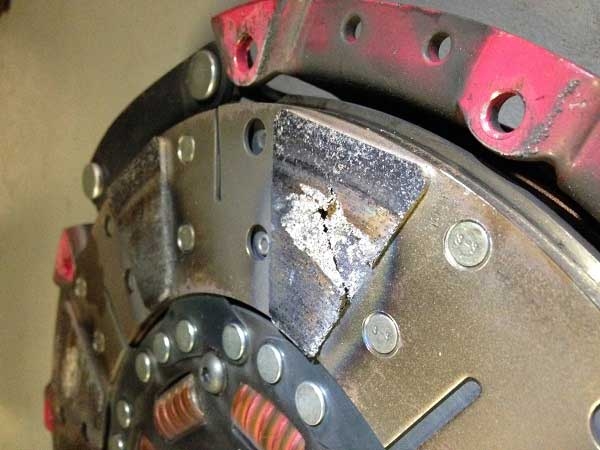
A clutch is what transfers power from the car engines to the wheels or stops that flow when necessary. A slipping clutch is one that can’t engage in this process at all. As a result, you are forced to increase your engine revolution per minute (RPM), which will lead the rear wheels to spin excessively to make up for the malfunctioning clutch.
This abnormally high speed will cause more friction with the road and other compartments within the vehicle, eventually wearing the tires out. Continuous speeding like this can produce heat and finally cause smoking.
Solution: You should look at the clutch fluid as well during regular check-ups. If there’s a problem with the cables, you need to adjust them. Any wear on the clutch will be visible. Look out for them and consult mechanics to fix or replace the clutch.
2. Intentional clutching
Even when the clutch plate is alright, you can wear it out by clutching too hard or too much. As a result, the internal frictions between the clutch components will produce heat and burn the clutch altogether.
Solution: Stop putting too much pressure on the clutch.
3. Limited Slip Differential (LSD) failure
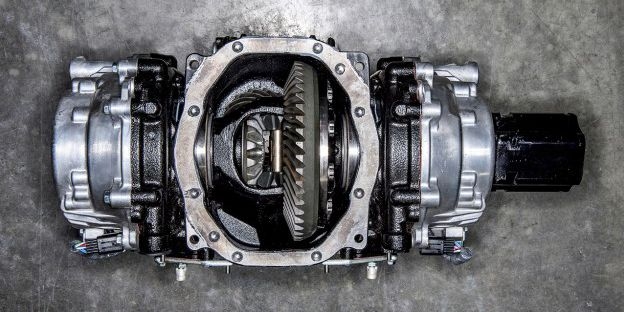
An LSD usually keeps the individual wheelspin in check and reduces tractions on cars. So, a malfunctioning LSD can make one of the wheels spin more excessively than others and overheating it to the point of smoking.
Solution: An LSD is usually electronically controlled. So, look out for corresponding warning lights and see if your driving is affected by it or not. For example, can you smoothly turn or accelerate? If not, then your LSD has definitely failed. In that case, you have to consult the mechanics and consider repairing it.
4. Brake failure
Failing brakes can also affect the rear tires depending on the tire conditions and brake health.
Solution: Keep your brakes in good condition all year round.
Why are the smaller tires smoking?
1. Overload
Loads have to be carried in proportion with the tire size in a vehicle. If you load excessively on a car with relatively smaller tires, you run the risk of burning them. Not only they’ll start smoking and smelling, they will possibly blow out as well.
2. Underinflation
Many people do not know that tire pressure is a major factor behind smoking. But it’s important to check on the pressure level in your tire from time to time.
Low pressure causes an excessive flex on the tire sidewalls and consequently, produces heat through internal friction. This can cause the small tires to smoke.
If you notice that your tires are flattened for some reason, don’t continue driving. The excessive friction will cause smoking and complete damage to the tires and the car.
If you have an emergency, drive very slowly to a nearby repair shop and get your tire fixed or replaced. But remember, this is a last resort.
Common causes
All the reasons we’ve discussed so far are applicable to every type of tire. They only differ in the degree of so. For example, overinflation can cause both front and rear tires to smoke.
However, the front tires usually smoke more commonly because of the car weight being mostly on them. Similarly, overspeeding can also affect all types of tires but front tires feel the impact more than the others.
Now, here are some other common reasons for tire smoking:
1. Brake malfunctions
We’ve already talked about brake drag and how it leads to front tires smoking in an earlier section. Let’s look at some of the other cases where the brake is the culprit.
a) Smoking brake pads
Yes, while you’re thinking the smoke is coming out of your wheels, it can actually originate from brake pads.
The pads on your disc or drum brakes rub on a surface to increase friction and slow down your car when necessary. A damaged or overheated brake pad will naturally burn out and start smoking.
b) Stuck brakes
If you have a brake that is stuck, one of the wheels will move slower than the speed you’ll drive in. As a result, the wheel will slide on the road and produce heat alongside the brake to finally fry the tire.
c) Rusty brake caliper slider
Slider pins are what help brakes work correctly. If the sliders are rusty, they can compromise the efficiency of brakes and indirectly cause tire smoking. However, it’s not a major problem since only a simple cleaning can fix this issue. Here’s how you can do it-
d) Seized brake caliper piston
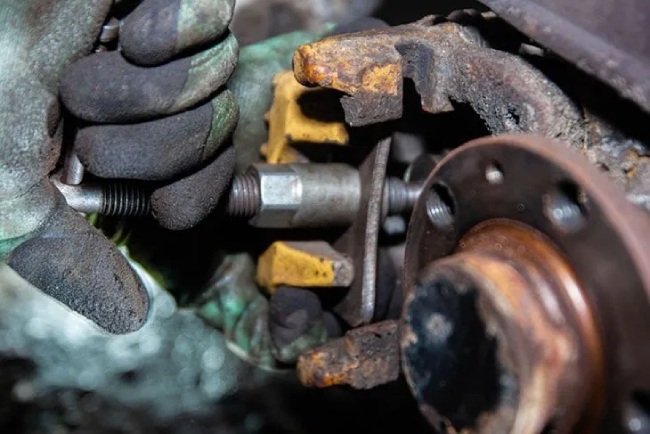
The piston is the component in a brake system that applies pressure to brake pads to connect with the brake rotor and slow down the car. If somehow, the piston itself wears out, the entire brake system will stop working. This is a more serious issue than the previous and in this case, replacing the piston is the only way to go.
e) Overheating of brakes
If your brake is heating up consistently, the brake fluid will boil and lead to possible brake failures and tire smoking.
f) Blocked master cylinder

The master cylinder contains the brake fluids. A blocked master cylinder results in reduced fluid pressure on the brake pads. So, the brake doesn’t function properly. You’ll have to step on the brake pedals harder to make it work. But this constant pressure on the brake rather overheats the brake system.
g) ABS control module failure & wheel lockup
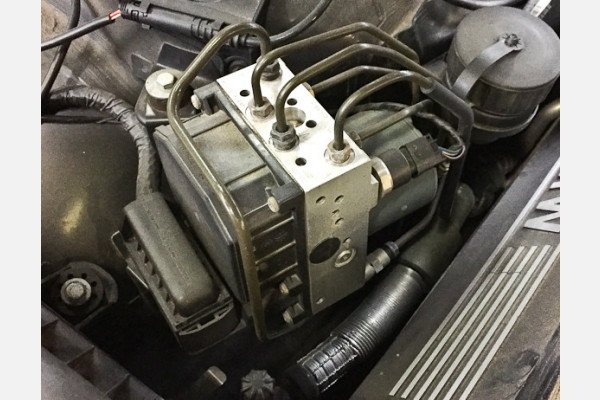
Anti-blocking system (ABS) prevents wheel lockup during a hard brake. The ABS module controls the procedure. If the ABS module has a defect, the entire ABS system can collapse. As a result, one or more wheels can lock up after a hard brake, skid, produce heat and smoke and even cause a life-threatening accident.
h) Hand brake system
Although rare, sometimes your tire can be burnt by the hand brakes left on while driving. Some vehicles offer ringing sirens for warning but the safety system associated with it can also be faulty. So, the brakes can overheat and cook both the brake and the tire
So, don’t forget the brakes when conducting maintenance of the car. Brakes are just as important as tires when it comes to preventing smoking. Get the brake pedals checked if you feel they’re not as efficient as before. Change your brake pads if they have already worn out.
2. Short-circuits
The car’s electrical system can get troublesome if a short-circuit occurs. It can happen anywhere, for example, in a battery or an air conditioner, but affect the entire electrical structure within the car. This massive outage can also affect the car’s internal mechanisms such as the brake system and cause smoking in the tires.
If you have even the slightest hint of danger from any of the electrical appliances in your car, get it checked by a professional to avoid any future disaster.
3. Faulty Wheel Bearings
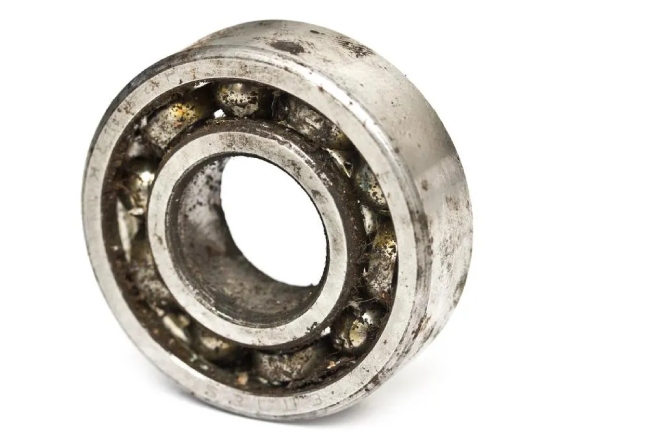
This is a dangerous problem on its own. If you see and feel your wheels shaking or rattling, you should immediately turn your attention to your wheel bearings. Driving long term with faulty bearings like this can permanently damage the center hub of your wheel or worse, detach the wheel from the car and cause a serious accident on road.
If the wheel bearing is the cause of your smoke, you should understand that the bearing is barely surviving by being loosely connected with your wheel. You should change it for the better.
4. Rubbing against something
Your tire might be grinding against something internal this whole time. Check on and inside the fender. Look for any scratch or stain on the tire to get an idea about what’s really causing the friction. You should check if there’s any tire mark on any of the components near the tire to confirm your assumption.
5. Impure motor oils
Motor oil mainly lubes the mobile parts in a vehicle. Based on the quality and service, it can last a long time. However, it’s still possible for motor oil to burn out and build impure carbon deposits.
Don’t forget to check your oil level at regular intervals. Inspect any sort of leaks from under the car. If you notice oil drips, the oil is probably burning. White or blue smoke from the exhaust pipe and warning lights in the dashboard for oil pressure are further signs. Immediately consult the manufacturers to get it fixed if it’s an engine issue.
6. Improper wheel alignment
It’s a rare case that the wheels on your vehicle are not accurately aligned. Even if it is, you can easily detect the problem by observing many indications such as creaking noises coming out of the wheels, misplaced steering wheels, car deflecting sideways etc. If you don’t, the misaligned wheels can be responsible for a number of problems. Mostly, the front tires will face tire drag and wear out quickly.
If the wheels are not aligned properly, they’d rub on themselves and other internal components. This friction can go unseen for a long time, which is concerning because you won’t even know why the smoking happened. So, check if they’re placed right. If not, consult a mechanic to fix this orientation.
7. Reckless driving
If you are up for adventures and used to drive rough, it can bring about a problem for your vehicle. You are constantly putting your tires through unnecessary frictions, which as we’ve seen above wears them out very easily.
8. Loose rubber hose
Rubber hoses maintain the flow of car fluids between components and keep the driving smooth. However, if the hoses are loose enough or the master cylinder is defected, it’s possible that the fluids won’t pass through properly. As a result, the brakes won’t receive enough pressure and the tires will skid and slide across the road damaging themselves.
If you have loose rubber hoses in your car, tighten them with pliers or screwdrivers. If they’re damaged, replace them. Make sure there are no leaks, and check that the affected systems work properly. Regularly check and maintain your hoses to prevent future problems.
Overall, these reasons are most commonly responsible for tire smoking. We’ve discussed the preventive measures for each of them for your convenience.
But there’s no greater solution than routine maintenance. Always check up on your car and its components including tires, brakes, clutches. Make sure the tire pressure is right, wheel bearings haven’t gone rusty and the wheels are compatible with the road you’re frequently driving on.
Is tire smoke normal?
Well, probably not for average car drivers like you and I. Smoke coming out of our tires would typically mean it’s burnt and needs replacement.
However, for racers who drive specialized sports cars, smoking tires are a show-off! Since they drive at an extreme speed and perform exciting drifts on the racing track, their tires are always in huge friction with the road. This causes smoke coming out from their car, which is absolutely normal.
How to recognize smoking tires or brakes?
There are some signs and symptoms of realizing that your tires or brakes may be smoking.
Smell of Burning Rubber
If you’re riding smoothly and suddenly an odor of burning rubber reaches you, you can be almost sure that your tire or brake is smoking.
Hand Brake Signal
Nowadays, most cars now incorporate a warning light on the dashboard to tell you that the hand brake is engaged correctly. However, if the light flicks on while you’re driving, it can also mean that your brake system is experiencing some kind of trouble.
Odd Feeling of Brake Pedal
The brake pedal will get too flexible or too rigid compared to how you’re used if something’s wrong with the brake system. So, don’t discard the possibility of smoking if you’re feeling a little weird stepping on your brake pedal today.
Shaking of Car
When braking, if you feel an unnatural shaking from your vehicle, it can also mean something’s wrong internally.
What to do when your tire is smoking?
Step 1: Stop Your Car
While driving, if you smell burning rubber from nearby, it’s time you stopped and got out of the car. Don’t keep driving and risk an accident. You should prioritize your safety over other emergencies.
Step 2: Check
Get out of the car and try to figure out the problem. Where is the smoke coming from? A tire or the brake? Don’t go touching any of those with bare hands. They can be extremely hot. Observe the situations and decide on the next step.
Step 3: Call Professionals
We recommend that you ask for a professional- local or otherwise. It doesn’t matter if you’re handy with car mechanics. You need to be safe and smart when dealing with a dangerous situation like this.
How to fix smoking tires?
You can fix your smoking tires with the help of a professional or a mechanic or even yourself if you’ve earned some expertise on the matter.
Change Your Tires
Your tire has already been damaged whether because of the smoke or before it. So, you have to replace it.
If you can afford it, replace all four tires to stay safe. If not, change the damaged one only. This will be a little tricky since a new tire to the existing system can make your wheel arrangements uneven and uncomfortable if not done right.
Check Your Brakes
Your brake system can be highly involved in smoking your tires. In fact, sometimes, you can think that the tire is smoking whereas the fault is in your brakes. So, get them checked out thoroughly by an expert if you can’t do it yourself. If the problem is in the hydraulics, you may have to change the entire brake system.
Check Your Clutch
Don’t leave out your clutch either. Clutch systems can also burn and produce smoke.
Check Your Wheel Bearings
If the wheel bearing is faulty, you’ll notice it loosening or sticking out from the hub of the wheel. So, replace it with a fresh one that fits your tire.
Consider Oils
We’ve said before that burnt motor oils can also be a reason behind smoking tires. So, check if you need to refill the oil or change them. They can be expensive but not more than your life.
Appoint a Professional
You can’t take care of everything when you have a smoking tire. Always seek help from a local or a familiar mechanic to help you professionally and effectively.
Conclusion
By now you have an answer to your question – why is my tire smoking? You can really avoid smoking your own tires if you drive carefully enough and keep your vehicle in regular maintenance.
However, if the tire is smoking not because of your driving behavior but your car’s internal mechanics, you should take this seriously. This smell of burning rubber and the released smoke can lead to larger problems and even accidents beyond recovery.
If you’re experiencing the tire smoking right when you’re driving, stop and get out. Inspect the problem and let a professional fix it.
You should learn about the factors contributing to the smoking of tires and brakes and take preventive measures accordingly.
We hope that this article has provided you with necessary information regarding tire smoking and so you’ll be much more aware and safe from now on. Good luck!
FAQs
Q. Why does tire smoke smell like burning rubber?
Ans. It’s not oil or wheels that’s burning when we’re talking about smoking tires. Tires are made of rubber and so when they burn, a stench of burnt rubber will be in the air.
Q. Why is tire smoke white?
Ans. Tire smoke is typically white because the rubber that burns in the tire leaves out ash which is basically carbon. This carbon-based soot gives off a white color.
Q. Why does my car smoke but not overheat?
Ans. This may be the case if there’s a foreign object in the cooling system of your car. The object heats up the cooling system and the coolant then boils and mixes with other gasses to burn.
Q. Can I drive my car with a bad wheel bearing?
Ans. You can drive a vehicle with a faulty bearing for sure. However, the bearing fixes the wheel to the car. Extensive driving with a bad one can separate the wheel while driving and cause an accident. So, it’s not recommended.
Q. How often should wheel bearings be changed?
Ans. Ideally, every 100,000 miles. But you should replace the bearings whenever you think it’s showing signs of wear or damage.
Q. How often should I have my alignment done?
Ans. Every 10,000 miles. But you may have to do so earlier for an unfortunate incident before that.
Q. How does a handbrake switch work?
Ans. The switch is right under the hand brake. There’s a plastic arm on the switch. When the handbrake is down, the arm is tucked in and the switch is off and when the handbrake is pulled up, the arm comes out and the warning signal lights up.
Q. Is tire smoke dangerous?
Ans. No. The odor of the smoke can be annoying but it’s not poisonous or detrimental to your health. There’s no need to be scared of the smoke either. It can serve as a warning for you to change your tires or other systems.
Q. Should I keep driving if I smell my tire burning?
Ans. Of course not! You know that smoking tires mean they’re overheated and burnt out already. Next, they’ll blow out and make you lose control of the car. This is a bad decision to keep driving with a defective tire like this which will almost surely end up in a lethal accident.
In the worst case scenario, your car will catch fire if you keep providing constant friction to the smoking tires. In fact, it’s inevitable that fire will generate if you get those smoking tires rolling no matter what. So, please don’t.






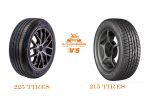



Leave a Comment